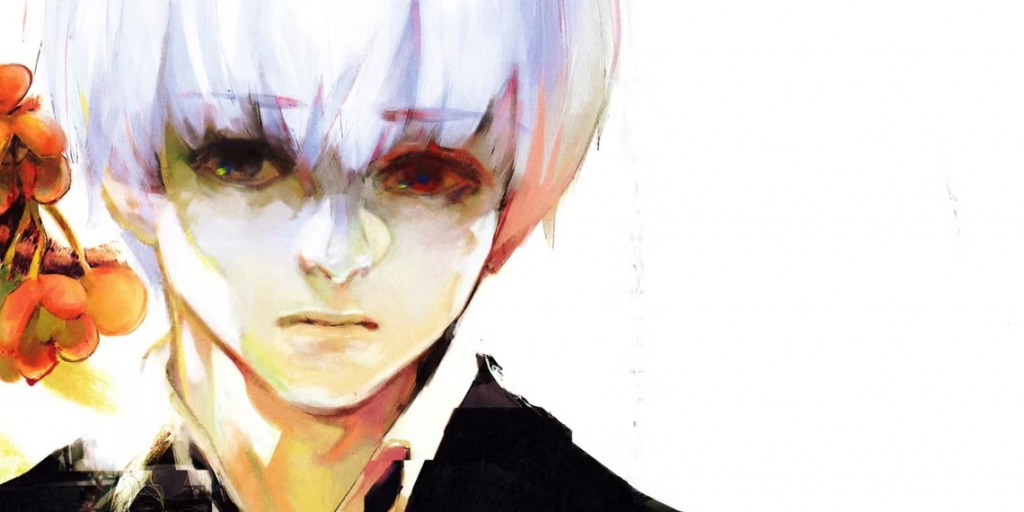
Tokyo Ghoul has become a defining anime series of the 2010s and is widely recognized for its unique blend of genres, including dark fantasy, psychological horror, and action. With its bestselling manga, hugely popular anime, and various spin-offs, Tokyo Ghoul is one of few anime series to achieve mainstream success. With nearly a decade of content, it’s hard to deny that Tokyo Ghoul has left a lasting mark on anime and beyond. Sui Ishida’s manga spawned a media empire of video games, live-action films, merchandise, and more, consistently giving fans something to look forward to.
Tokyo Ghoul’s popularity can be attributed to its engaging storyline, unique characters, and distinct art style. Set in a world shared by flesh-eating Ghouls and humans, the protagonist, Ken Kaneki, experiences a terrible accident, resulting in him becoming a half-Ghoul. The manga was first serialized in the seinen manga magazine Weekly Young Jump from September 2011 to September 2014. Over this period (and beyond with Tokyo Ghoul :re), it was remarkably successful, selling over 44 million copies as of February 2019, making it the best-selling manga franchise of the 2010s. On the site MyAnimeList, it holds the title of the 5th most popular manga, outranking Bleach, Death Note, One-Punch Man, and other massively popular series.

Tokyo Ghoul is often credited with revitalizing horror manga and, while it may have encouraged works of that genre, the series is more a blend of manga’s darker genres. Dealing in dark fantasy and the psychological with rich worldbuilding and deep character study, Tokyo Ghoul owes much of its success to its unique tone and storytelling approach. There’s some serious depth, with enough edginess to appeal heavily to the seinen demographic. It’s this blend that enticed such a strong fanbase, which would expand exponentially following the anime.
The Tokyo Ghoul franchise has been adapted into different mediums and has seen various sequels over the years. Let’s look back at each of these as a retrospective for this iconic series.
The original manga remains the best piece of Tokyo Ghoul media out there, brilliantly kicking off the franchise and rounding off with a powerful ending never adapted elsewhere. Sui Ishida’s artwork is stunning, and his writing is superb, crafting a world that is both fascinating and terrifying. The characters are complex and well-developed, and the themes explored in the manga are thought-provoking and impactful.

The 2014 anime adaptation of Tokyo Ghoul was divisive. On one hand, it awkwardly condensed and rearranged the manga’s plot, which long-time readers weren’t happy about. On the other, it was able to adapt Ishida’s story in a way that appealed to more people than ever. It was episode 12, “Ghoul,” that really came to define the series. Studio Perriot put forth their best, perfectly recreating Kaneki’s inner conflict, his iconic white hair shift and his fantastic battle against Jason. Overall, the season opened the floodgates for the Tokyo Ghoul fanbase, quickly making the anime one of the most popular of the year and eventually of all-time.
There was also the opening. Unravel by Toru Kitajima (TK) took over the world for a while, introducing many to an exciting new side of Japanese music. In what may be TK’s magnum opus, Unravel was a fantastic track tailor-made for Tokyo Ghoul, and it’s a strong contender for the most popular anime opening of the 2010s – with competition from Attack on Titan’s Guren no Yumiya. Paired with powerful visuals playing into the credits of episode 12, the opening created a lasting impact that remains to this day.

The second season of the anime, Tokyo Ghoul √A (Root A), was an original story not found in the manga. While it had some interesting ideas, it was not as well-received as the first season, and many fans found it lacking in comparison. Still, it had its moments, including a fantastic opening theme, “Munou” by österreich, which stands out as one of the best anime openings of the season.
Tokyo Ghoul:re is the sequel manga to the original Tokyo Ghoul, continuing the story two years after the events of the first series. While it wasn’t as well-received as the original, it still has its fair share of fans, and it expands on the worldbuilding and character development of the first series. The anime adaptation of Tokyo Ghoul:re also divided the fanbase, with many feeling that it didn’t live up to the original.
Finally, there are the various spin-offs, including Tokyo Ghoul: Jack and Tokyo Ghoul: Pinto, which explore the backstories of side characters from the original series. There’s also Tokyo Ghoul:re Call to Exist, a video game adaptation that allows players to step into the world of Tokyo Ghoul and battle it out as a Ghoul or a member of the CCG.

In conclusion, Tokyo Ghoul has had a massive impact on anime and manga, and it’s easy to see why. With its unique blend of genres, engaging storyline, and unforgettable characters, it’s no wonder that it has such a devoted fanbase. While not all of the spin-offs and adaptations have lived up to the original, they still offer a chance to explore the world of Tokyo Ghoul in different ways. And with a live-action adaptation in the works, the franchise shows no signs of slowing down anytime soon.

We bring out some of the most well-known Tokyo Ghoul Collection, all of which are available at reasonable costs. Visit our link now if you are interested in the Tokyo Ghoul Collection
Tokyo Ghoul Car Floor Mats, Juuzou Suzuya Art Car Floor Mats, Anime Car Decoration
Tokyo Ghoul Car Floor Mats, Juuzou Suzuya Car Floor Mats, Anime Car Accessories


Itori,Roma Hoito,Donato,Aogiri Tree,Eto
